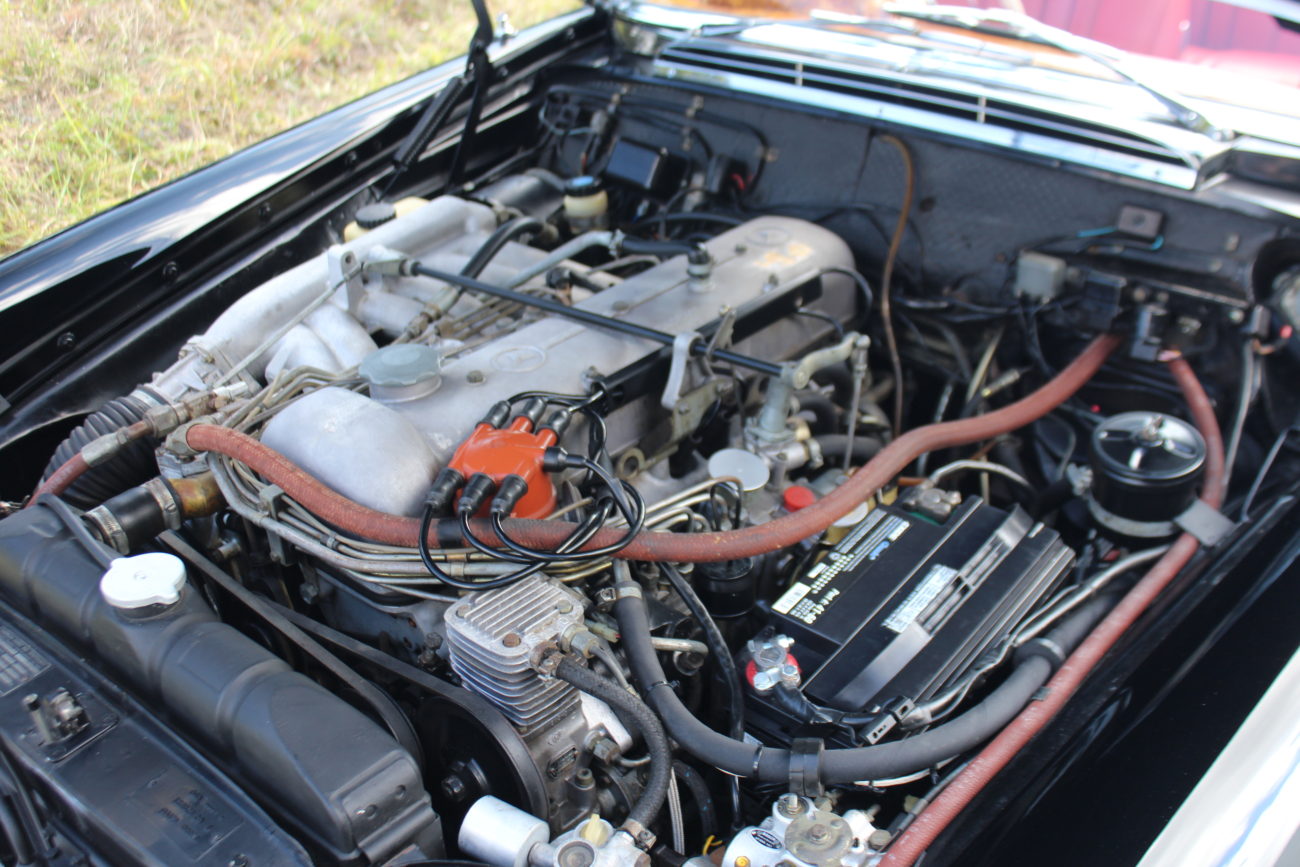
Engine Number
Engine Number
Definition
The Engine Number (German: Motor Nr) is the unique number of the engine. It is stamped on the engine and listed on the Data Card.
The engine number is located on the flat machined area below the spark plugs towards the rear of the engine on the driver’s side. If the machined area is there, but no numbers are stamped on it, this means you have a factory replacement engine. There may also be a small metal plate riveted onto this spot, with the words “Mercedes-Benz”, “Original Tauschaggregat” and the engine number included. Replacement engines were sometimes stamped by the Mercedes dealer with the original engine number using an appropriate die punch numbers set.
The 14-digit engine number consists of the following elements:
First three digits: Engine model
- 127 M127 II 2.3 Liter for the 230 SL
- 129 M129 III 2.5 Liter for the 250 SL
- 130 M130 2.8 Liter for the 280 SL
The next three digits describe the engine version. For example,
127.981 is the engine for the 230 SL (W113)
127.980 and 127.983 are engine versions for 220SE (W128, 2.2 liter)
127.982 is the engine for the 220SEb Sedan (W111, 2.2 liter)
127.984 is the engine for the 220SEb Coupe/Cabriolet (W111/3, 2.2 liter)
129.982 is the engine for the 250 SL (W113)
129.981 is the engine for 250 SE (W108) sedan and the early 250 SE/C (W111) coupes and cabriolets (until VIN 085398).
129.980 is the engine for 250 SE/C (W111) cars after VIN 085397.
130.983 is the engine for the 280 SL (W113)
130.980 is the engine for the 280 SE (W108 E28 sedan and W111 E28 Coupe and cabriolet)
130.920 is the engine for the 280 S (W108 V28, carburetor)
130.923 is the engine for the 250 (W114 V28 and C114 V28, carburetor, 2.8 liter but badged “250”)
(Similar to the example of the platform before, when ordering parts you should always say M129 etc., because – as you know – there is also the R129, the 1990’s SL.)
Even within one engine version (engine “Baumuster”) sometimes major changes were introduced, therefore to order parts it is always necessary to have the complete engine number.
Quite some W113 vehicles do not have their original engine anymore. Sometimes a long-block is used, sometimes an exchange engine, and sometimes an engine from a sedan is swapped for the original engine.
The usability of these engines for the W113 has been described as follows (8):
“The engines in the sedans and SLs both have the same compression. They are designed to run on high test fuels. All the main components including pistons, crankshaft, connecting rods, oil pan, cylinder head, cylinder block, intake manifold, exhaust manifolds, even injection pumps and much more are exactly the same. The 230SL is the exception, it’s engine is unique to the SL. It does share some parts with some sedans but the cylinder head, intake and injection are completely unique to the 230SL.
The different horsepower rating of the 280SL engine over a 280SE sedan engine is probably due to a slightly “hotter” camshaft and the different distributor used in the SL.
The engine motor mount aluminum supports are different from sedans. The SL engine sits about an inch lower due to these supports.
Prior to 1969 most Mercedes automatics in sedans and SLs used the “K4C025”. When Mercedes upgraded to the newer, smoother automatic transmissions in the sedans in 1969, they did not upgrade in the SL. The SL kept the older automatic until the end of its production. The engine/transmission match plate is different on the early and late automatics. You can easily switch these engine/transmission match plates. You will have to switch the automatic flywheels on the later 280SE sedan engines. The standard shift flywheels are the same.
There may be some minor plumbing and accessory differences but these engines are mostly the same in their series. Always think of the series (group)of sedan and SL engines in this way: M127 (230SL=unique), M129 (250SL=250SE), M130(early 280SL=early 280SE), M130(late 280SL=late 280SE).
Note the two different “early and late” 280 series engines. These are different animals with the heads and cylinder blocks being different and not interchangable. However they do share the same crankshaft, pistons, rods, flywheels etc.
The physical size and configuration of all these engines is basically the same so if you are not too picky almost any sedan or SL injected engine will work in your car.”
The next two digits are the same as the center digits in the VIN:
The seventh digit identifies
1 left-hand drive
2 right-hand drive
The eighth digit identifies
0 manual transmission
2 automatic transmission
The last six digits are sequential by transmission type (i.e. separate for manual and automatic).
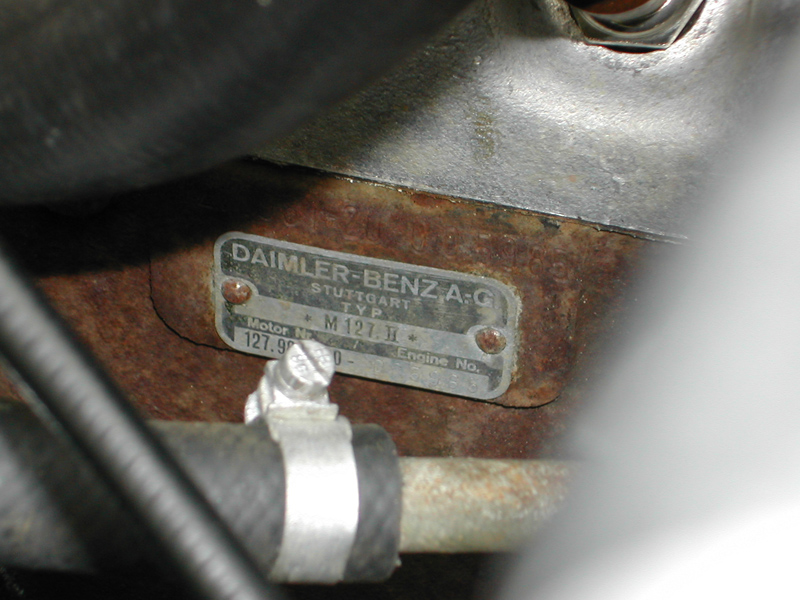
The engine number is sometimes on a plate riveted to the left side of the cylinder block, here an example of a M127 (230 SL).
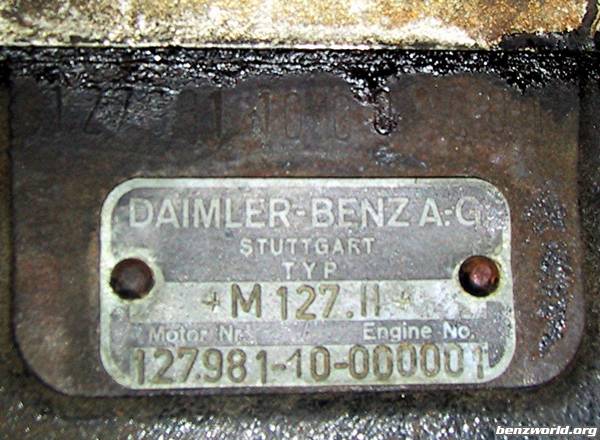
Engine 127981-10- 000001 was installed into the 230SL prototype with chassis no. 64 510 50 820, allegedly the 20th prototype.
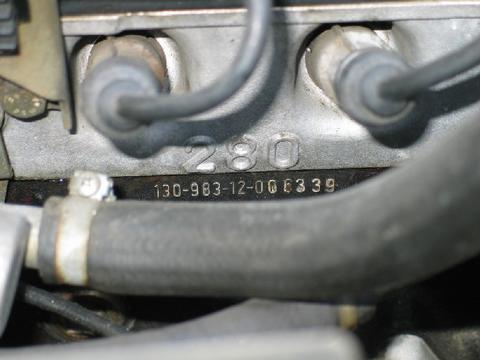
Or, the engine number is stamped into the left side cylinder block beneath the spark plugs.
If the engine has been restored with a longblock or an exchange engine, there is no engine number here but there may be a separate plate on the block indicating this (“Tauschmotor”).
Also, if the engine was swapped from another vehicle (i.e. there is an engine number, but it does not match the engine number on the data card), using the above list you can check the engine “Baumuster” (first six or eight digits of the engine number) if it came from an SL or from a sedan etc.
Editorial from Pagoda SL Group.

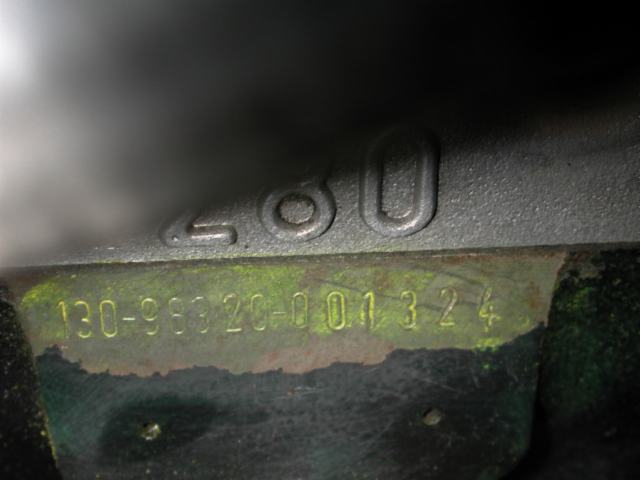

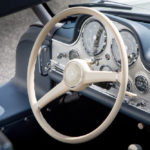


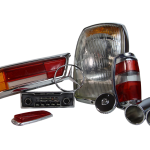
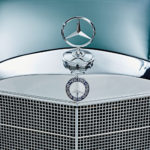
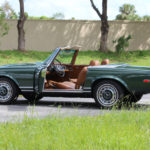
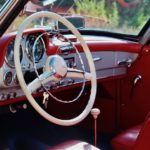
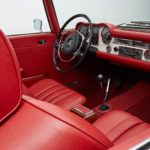
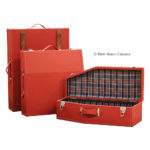
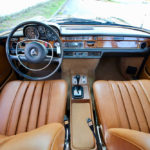
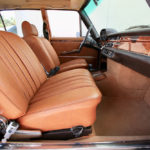
Hi,
Does the W113 230sl engine fit in a W111 250se body with out problem ?
Regards,
Erwin
How can you achieve the clarity of the engine number as per the photo above? I have some rust and am afraid to rub it off and erase the numbers.